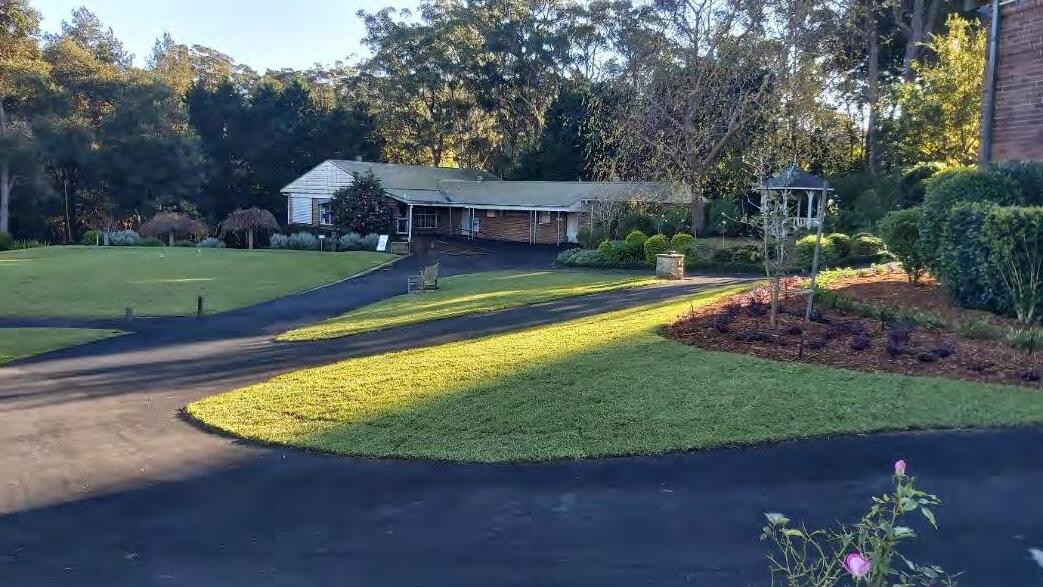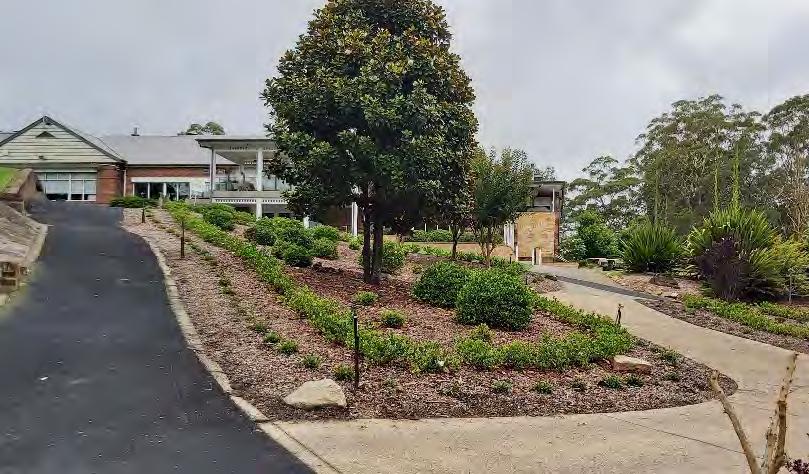
5 minute read
Gardens..

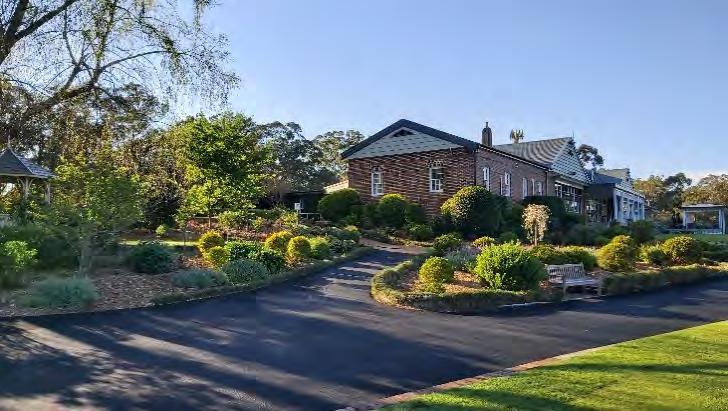
always beautiful and getting better all the time

Gardens .. always beautiful and getting better all the time
Pennant Hills Golf Club has always had pleasant gardens adjacent to the clubhouse. In the photo of the clubhouse, which had been extended in 1929, there is a large rose garden adjacent to the putting green and manicured lawn nearby.

The rose garden was planted in July 1930 with many roses donated by Harry Hazlewood, Founder of Hazlewood Bros Nursery and member of the Club.
In 1931, a narrow garden was made around the ends of the Putting green and over the ensuing years, the rose garden and other gardens were maintained, even during the difficult years of World War II. However, due to limited manpower during and immediately after the War, the gardens deteriorated and the Board Minutes reported on 26 October 1943 GARDENS “At present it is impossible to touch the gardens, although they are in bad condition”.
While basic maintenance continued over the next few years, by 25 March 1947 the minutes reported “In view of the bad state of the House garden and environs, the House Committee sought approval for the caddy master/gardener McPartland to be employed full time as a gardener and the professional act as caddy master for the time being.”
Clearly the Club’s pride in its gardens would not allow this situation to continue as in 27 May 1947 the minutes reported “Mr E. J. Hyde reported that he had instructed the Secretary to advertise for a competent gardener”
This clearly overcame the problem as in 23 January 1951 “Mr. Carruthers commended the Green Committee on the state of the garden and surrounds of the Clubhouse”
Photos of the clubhouse and area in front, show no formal gardens apart from some plants immediately in front of the balcony wall.

In 1951 Alex Marks was appointed Secretary Manager, and it seems that within a short while, more gardens appeared in front of the clubhouse.
And by 1956, the gardens had expanded and provided spectacular displays of annuals, perennials and roses, changing with the choice of plants each year.
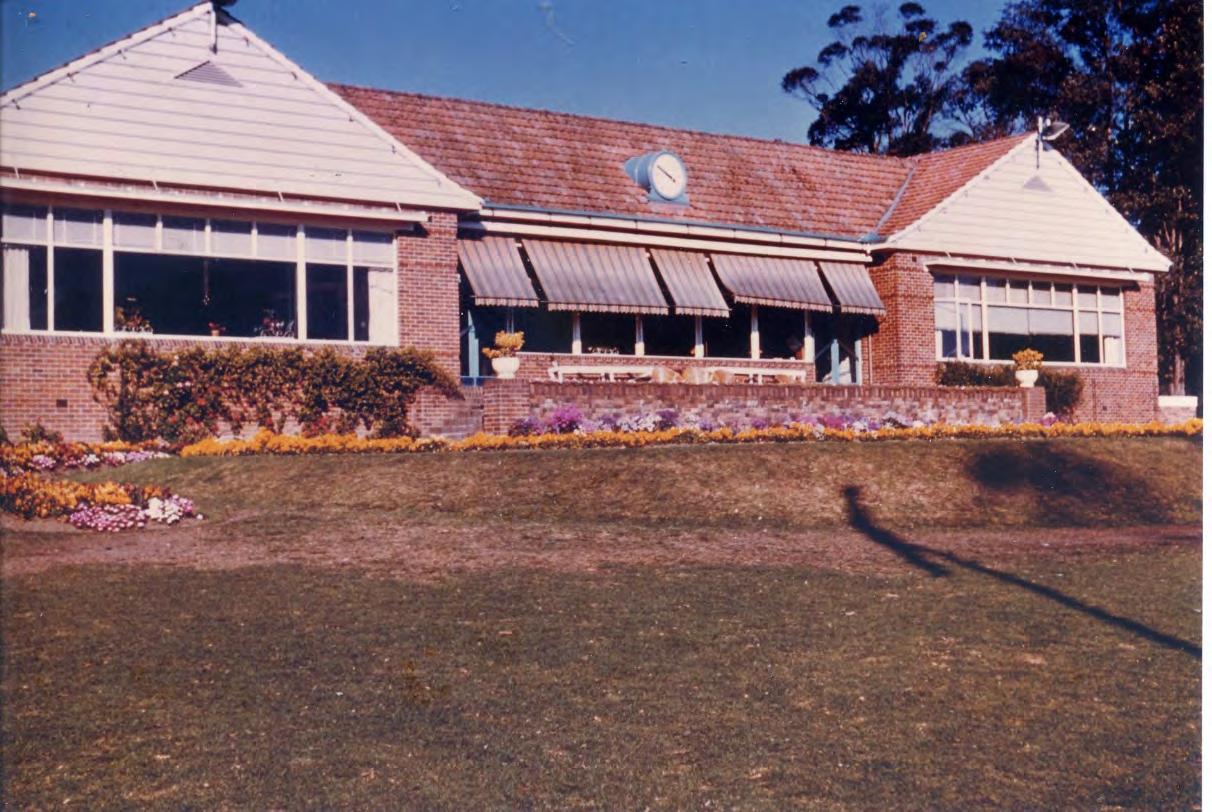
The layout and format of the garden beds changed many times over the following years. Initially the garden beds had no formal edging and pathways were covered with woodchip mulch.

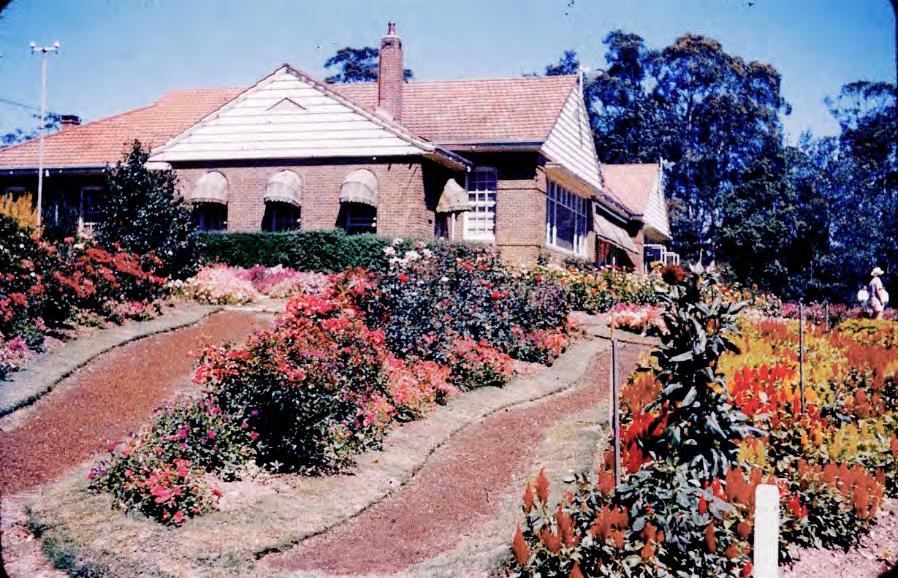
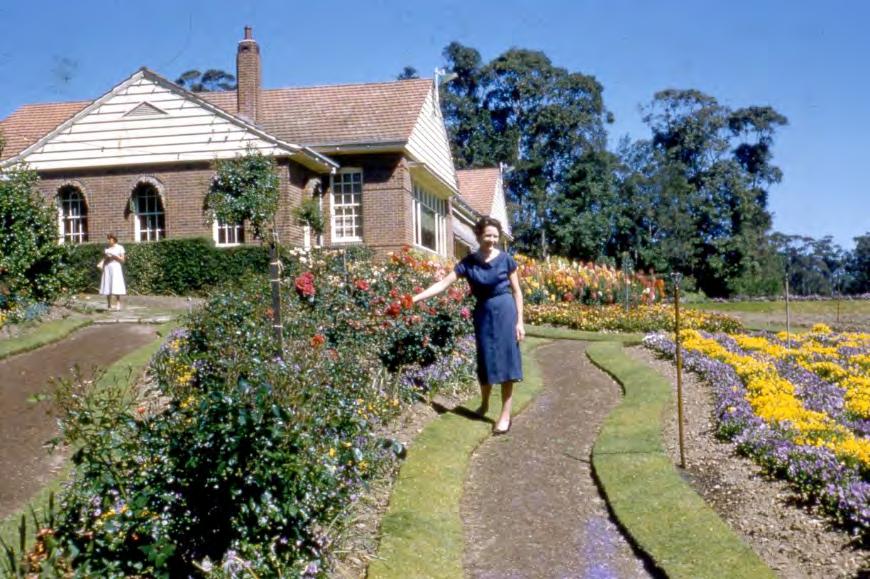
In 1969, a sundial was donated by Syd Gresham, father of Tony Gresham, and it was mounted on a stone pedestal surrounded by a rock garden. The pedestal had originally been intended as a fountain, however the sundial took pride of place.

A more formal pattern of gardens was formed around a circular central bed. These gardens had formal edging made of rocks, and the paths between were edged with concrete.
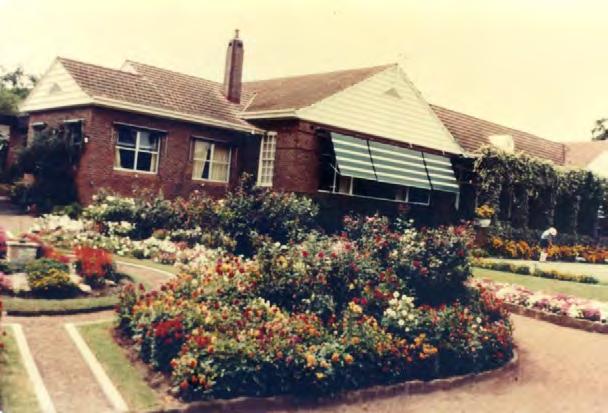

The gardens around the putting green became a feature and as seen in this 1988 photo, there were a double tier of gardens at each end.

The path in front of the terrace was narrow and a garden with flowering annuals was a feature against the brick wall.
As part of the Australian Bi-Centenary Year celebrations, the clubhouse gardens were completely formalised around the sundial garden and all paths and garden edges were lined with concrete and the path surface was crushed gravel. The putting green was encircled with a narrow garden of annnuals and larger garden beds housed more annuals at each end.
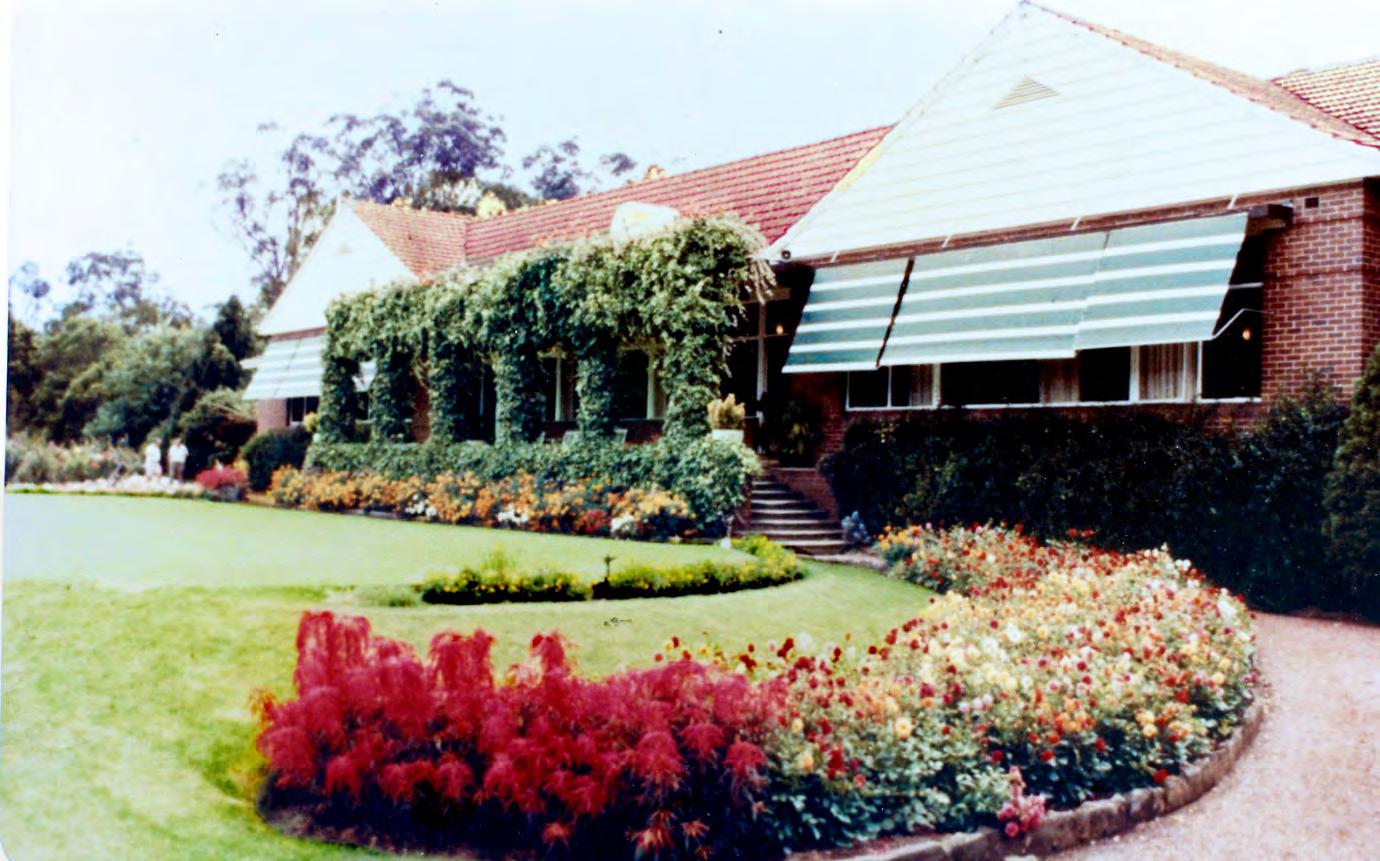
The path in front of the terrace was always very narrow, between a garden of annuals against the terrace wall and the edge of the putting green.
When it was decided to widen the path in 1967 some of the putting green was sacrificed in order to preserve the garden.

The minutes report “ Widening the walk between the clubhouse patio and the putting green to allow this to be generally used as a mode of passage from the 10th green to the 1st tee or vice versa. The Secretary requested that consideration be given to the widening of this path so that no interference should be caused to the garden in the front of the clubhouse patio”.
Over the ensuing years, the type of plants within the clubhouse gardens changed to include more shrubs and perennial flowering plants.
So the pattern moved towards a higher density of shrubs and trees which required a lower level of manpower and maintenance.
By 1997 the gardens had been simplified with some areas converted to grass to reduce the manpower needed to support an intense displays of annuals.

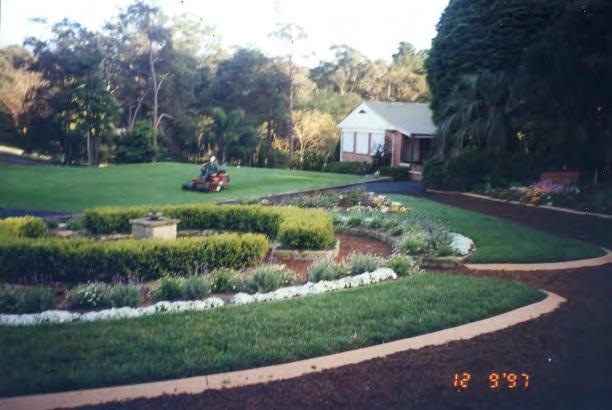

Previously the southern end had not much in the way of formal gardens as can be seen by these photos near the spike bar and balcony from the 1990s.
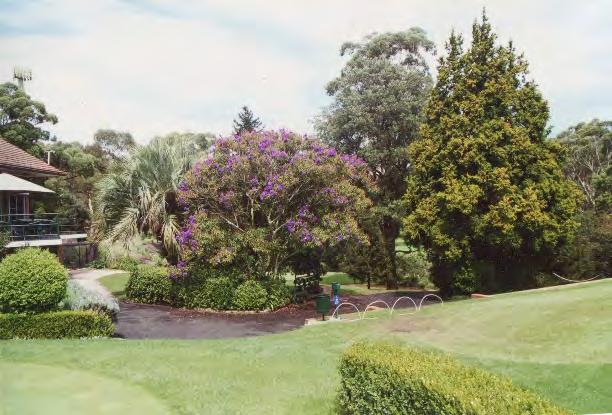
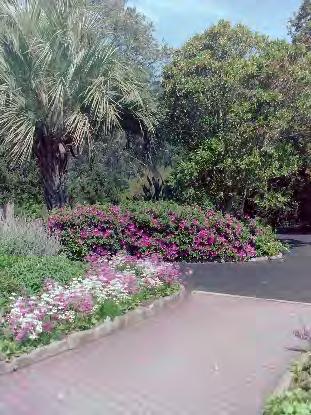
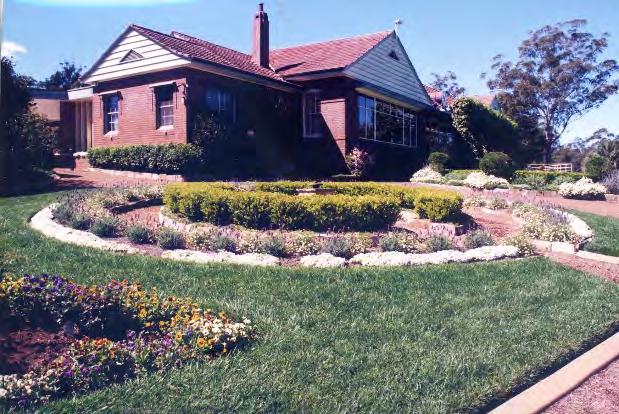
The southern end of the clubhouse prior to the 2001 extensions

After the 2001 renovation and extension of the balcony some improvements were made, but nothing to match the beautiful displays at the front and northern ends of the clubhouse.
In 2017 prior to the rebuild program, the gardens at the southern end were essentially modest plantings of shrubs near to the pro shop spike bar.

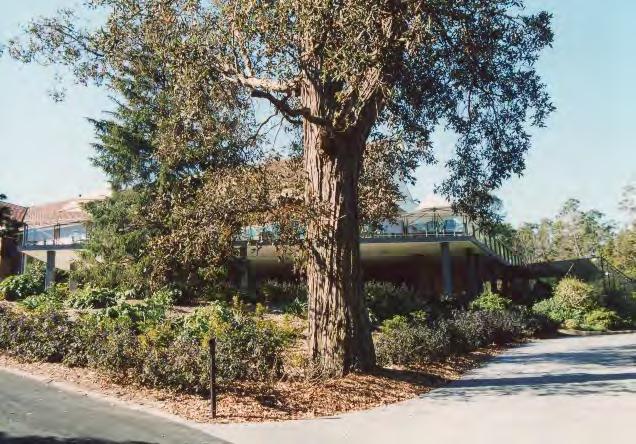


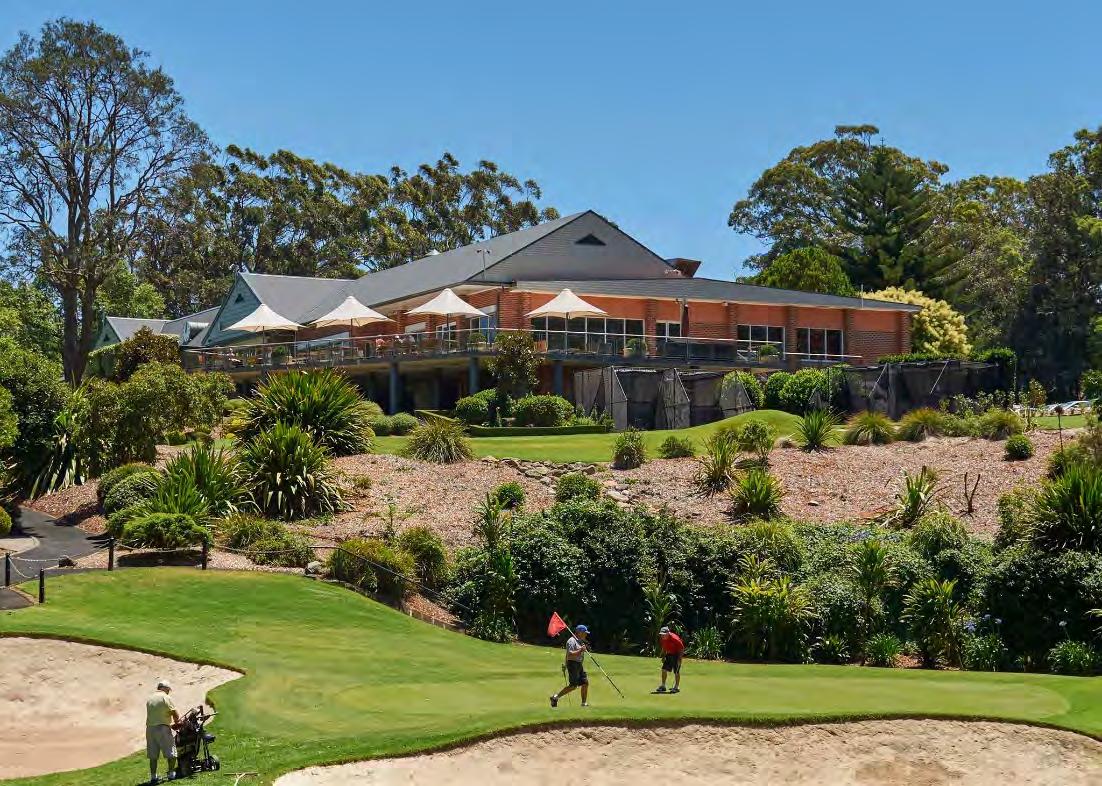
The 2001 Clubhouse renovations, which extended the offices northwards, made changes to the garden area a necessity. The inclusion of a gazebo resulted in a pleasant garden setting which was attractive to people enjoying their wedding reception at the Club. 2002
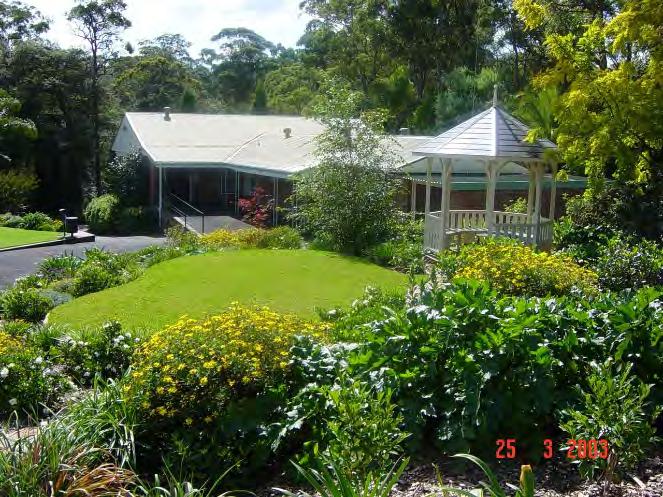
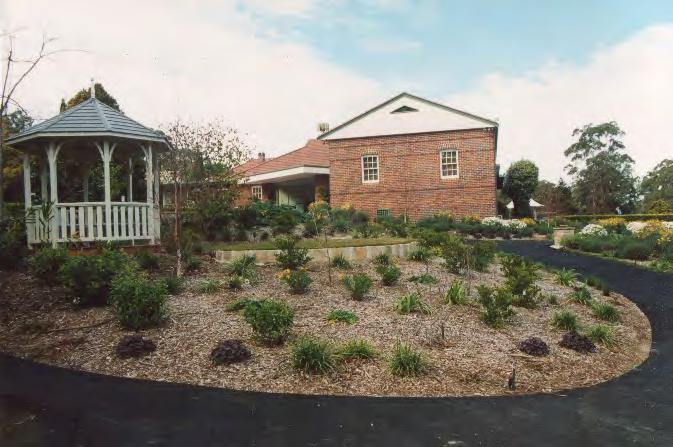
And the gardens at the southern end were improved. Over the next decade or more, the clubhouse gardens were a kaleidoscope of colour and growth.
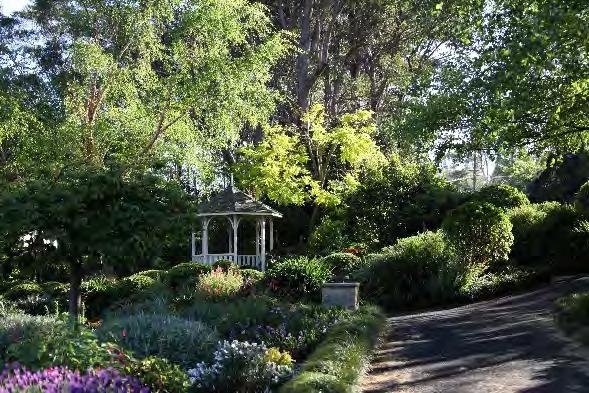
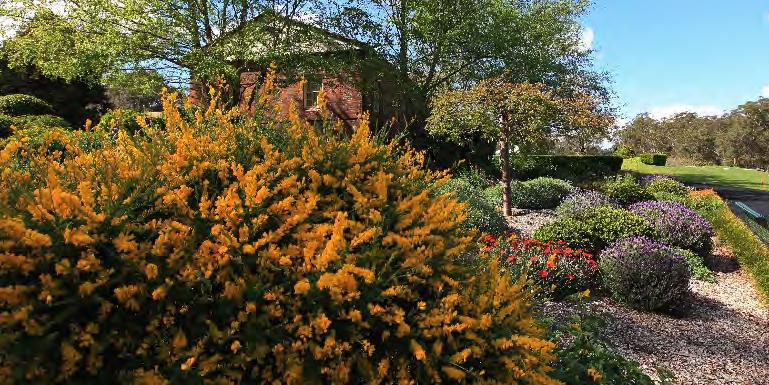

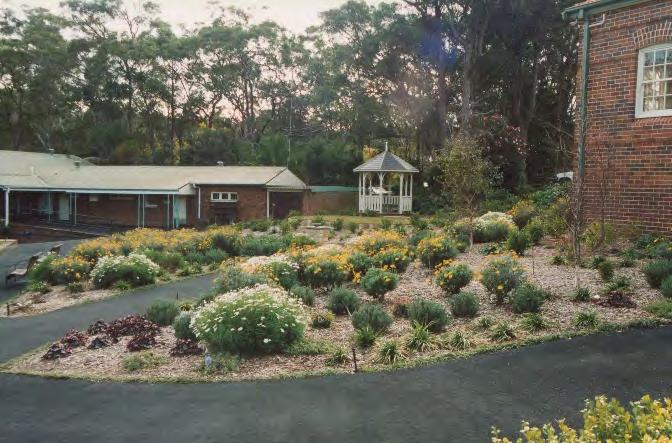
2015 2017
However by 2016, the Birch trees planted near the offices after the 2001 clubhouse renovations grew larger than was the original target height of 5-7 metres and posed safety and management issues relating to growing gardens close to the offices. The difficult decision as to whether to trim or remove the trees was carried out after much consultation with various experts. Initially dangerous limbs were trimmed back in late 2016, and the option of replacing them with Chinese elms considered, before the decision was made to remove 3 birch trees in March 2019.
Their removal allowed the garden area adjacent to and north of the offices to be replaced with lower growing shrubs for easier management and better display.

One feature of the gardens was introduced by the Horticulturist Rod Fletcher. He chose to use a hedge trimmer to shape the different shrubs in most gardens around the course. This provided very neat gardens, however created the constant need to trim to preserve the shape.

The gardens adjacent to the offices in August 2019 after the removal of the Birch Trees, some replanting and the clubhouse rebuild.

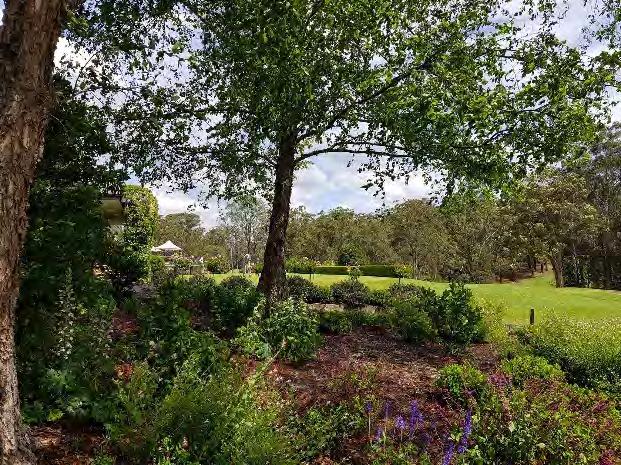
2021
The clubhouse rebuild in 2019 brought about a completely new look and style of garden at the rear of the clubhouse and at the southern end, and in front of the new pro shop. The gardens on all sides of the clubhouse provided a marvellously variable suite of displays, which enhanced the magnificent building itself.
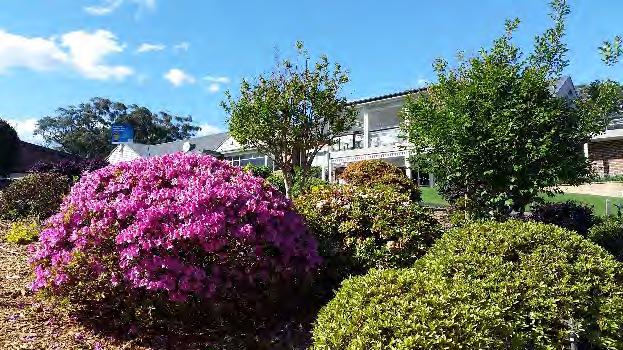
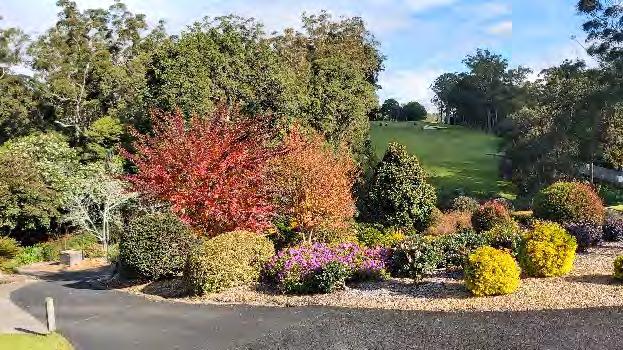

With the clubhouse gardens in good shape, there was now a focus on beautifying the areas adjacent to many of the tees and greens and the work done in these area has produced extremely attractive surrounds to many of these locations. This is covered in the chapter 6 Things of Beauty and Joy forever.

Centenary Garden Project. In May 2022, decisions were made to rearrange the gardens on the course side of the clubhouse. The intention was to provide clearer sightlines from the clubhouse to the course itself from all angles.
The garden in front of the proshop had all the small shrubs removed and a continuous line of Dwarf Gardenias and gazanias were planted in rows around the perimeter.
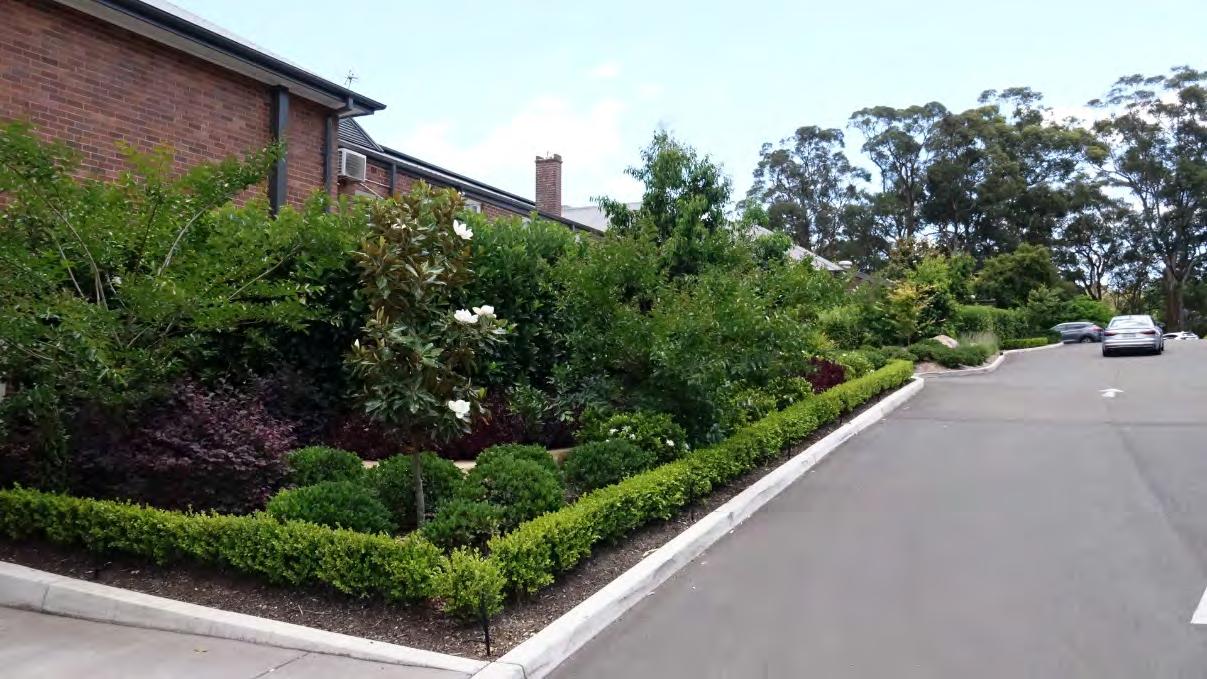
The garden below, towards the 9th green was replanted with red flowering Clivia.
The garden in front of the ladies tee on the 10th hole, was replanted with rows of dwarf Gardenia, with some dwarf tibouchina.
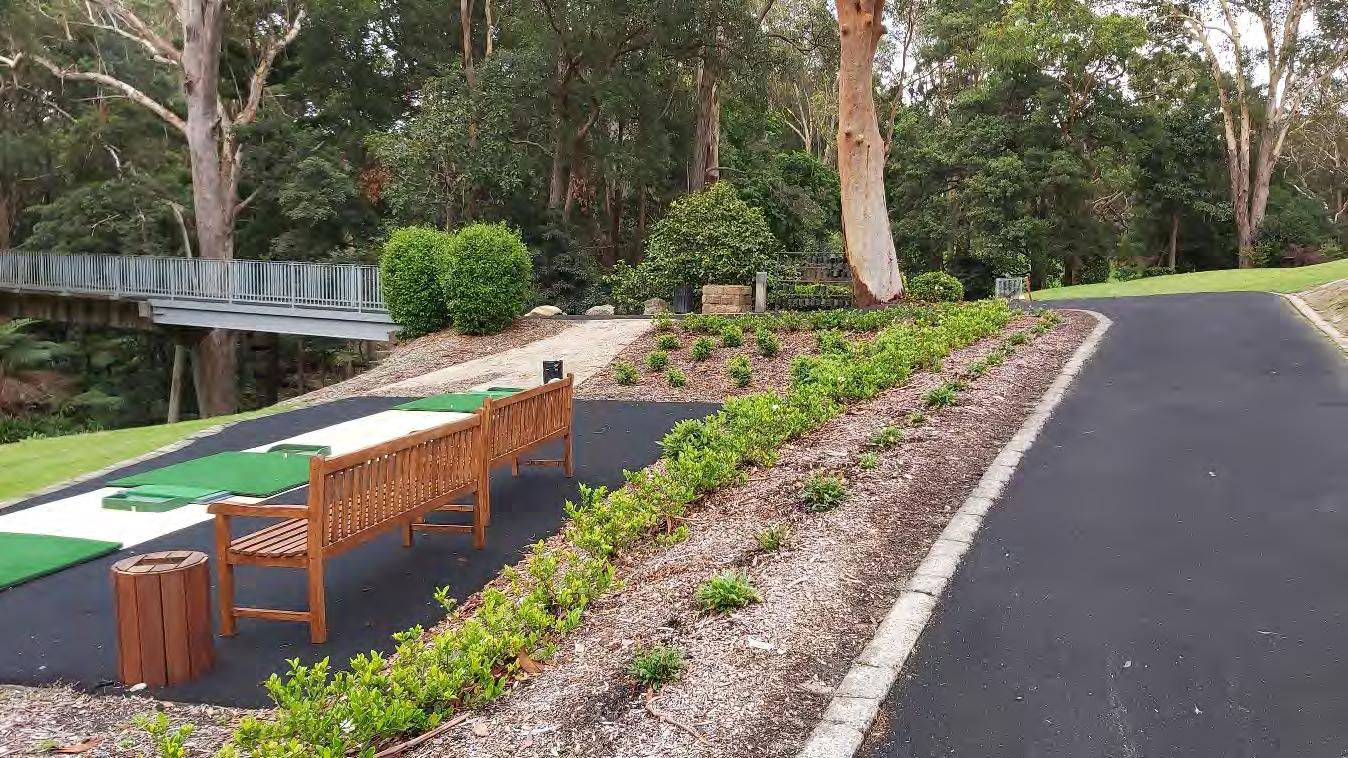
The triangular garden between the gazebo garden and the 1st tee, was converted to lawn to provide more parking for Golf Carts. The tongue garden between the triangular garden and the putting green, had the front portion converted to lawn.
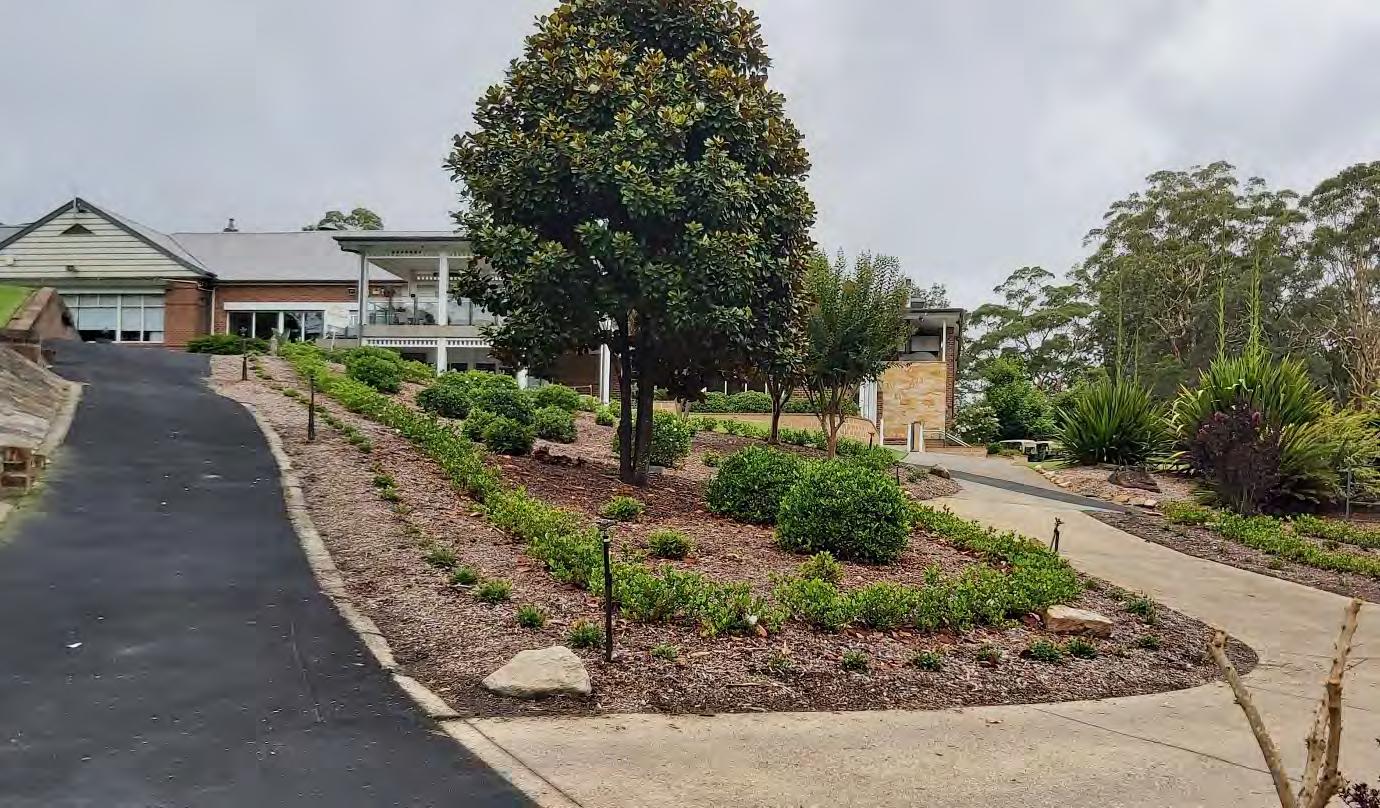
It cannot ever be said that the clubhouse gardens are always the same. We are presented with constantly evolving displays with variety of colour, shape and style.
